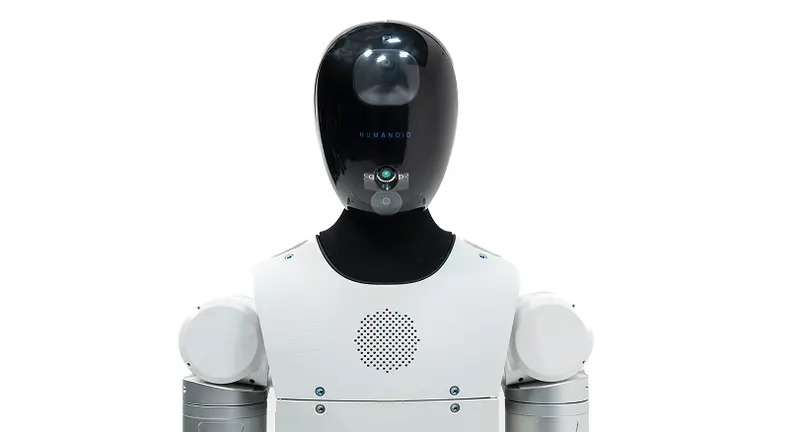- Published on
Humanoid's Pre-Alpha Robot Completes Bin-Picking Trial at Schaeffler Factory
- Authors

- Name
- Humanoids daily
- @humanoidsdaily

UK-based robotics startup Humanoid has successfully completed an initial proof-of-concept (POC) with German industrial supplier Schaeffler, marking a tangible step in the race to deploy humanoid robots in real-world manufacturing settings.
The trial, conducted at a Schaeffler site in Erlangen, Germany, involved a Humanoid pre-alpha robot performing a bin-picking task with metallic bearing rings. According to a joint announcement, the robot successfully used its parallel grippers to pick rings from cluttered bins, transfer them to a buffer table, and move between stations.
A Test of Flexibility
This task was specifically chosen because, according to the companies, it represents a challenge for traditional automation. Fixed robotic arms or cobots often suffer from "low utilization and limited ROI" in such scenarios. Schaeffler and Humanoid argue that a humanoid platform provides key advantages:
- Mobility: A single robot can move between multiple machines or stations, increasing its utilization.
- Generalization: AI models can be trained to handle many different types of parts, rather than requiring reprogramming for each new component.
- Adaptability: The system demonstrated "autonomous correction capabilities" for real-time regrasping, a necessary skill for dealing with cluttered bins.
To train the robot, Humanoid created a "physical twin" in its lab and used teleoperation with leader arms to collect training data. This data was then used to fine-tune a pre-trained Vision-Language-Action (VLA) model. This approach aligns with the pragmatic strategy previously outlined by Humanoid founder Artem Sokolov, which prioritizes rapid, real-world application over pure research.
Schaeffler's Multi-Pronged Robot Strategy
For Schaeffler, this successful POC is "another important milestone" on its path to adopting humanoid robots. Sebastian Jonas, Senior Vice President for Advanced Production Technology at Schaeffler, stated that humanoids play a "crucial role" in the company's vision for future production and that "Schaeffler plans to deploy a significant number of humanoid robots in its global manufacturing footprint".
This test with Humanoid is not Schaeffler's only exploration in the space. The industrial giant has previously collaborated with Accenture, NVIDIA, and Microsoft to build digital twins of its factories. Those simulations were used to test scenarios involving robots from competitors like Agility Robotics (Digit) and Sanctuary AI (Phoenix). This Humanoid POC appears to be one of the first physical, on-site trials announced by the company.
What's Next: The Alpha Robot Steps In
This initial test used a "pre-alpha" robot. With its success, the project will now advance to a second phase in a live production environment.

This next stage will deploy Humanoid's recently unveiled HMND 01 Alpha robot. That wheeled platform, which the startup claims was developed in just seven months, is expected to bring a higher payload capacity, more advanced manipulation, and improved AI performance.
The goal of phase two will be to validate the robot's performance in a realistic manufacturing setting, complete with the noise, dust, and operational demands of a working factory floor.